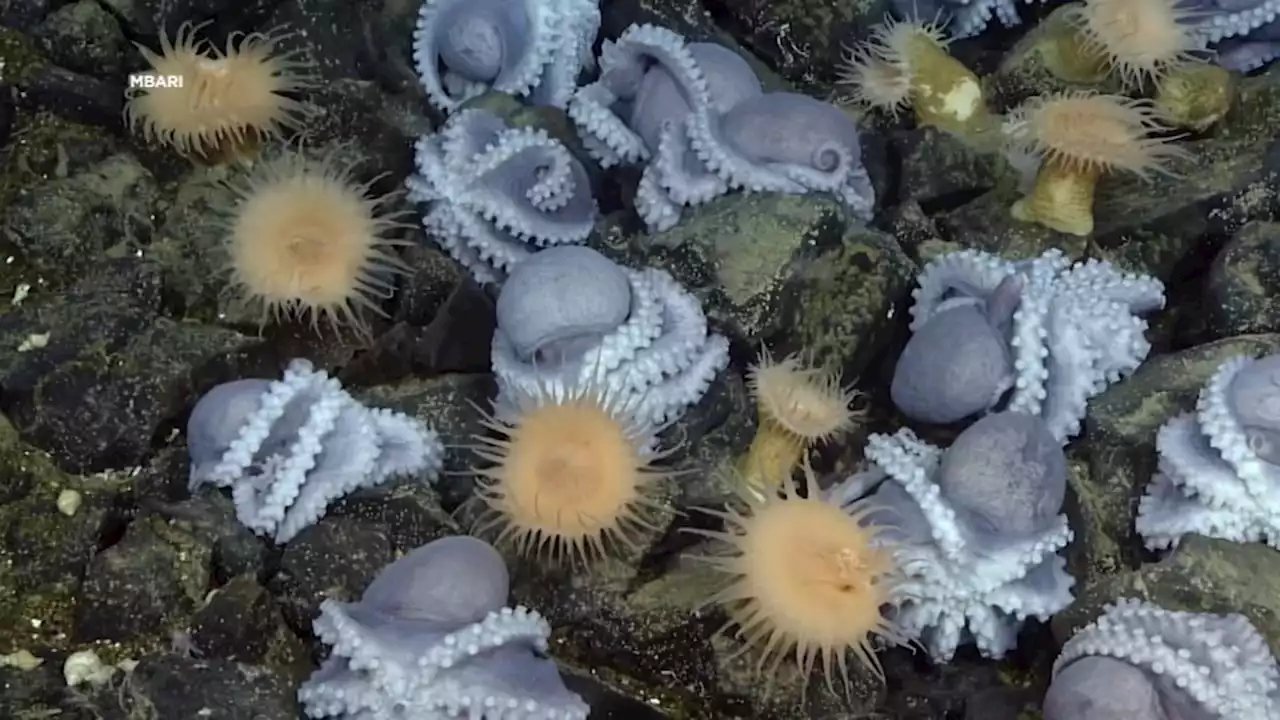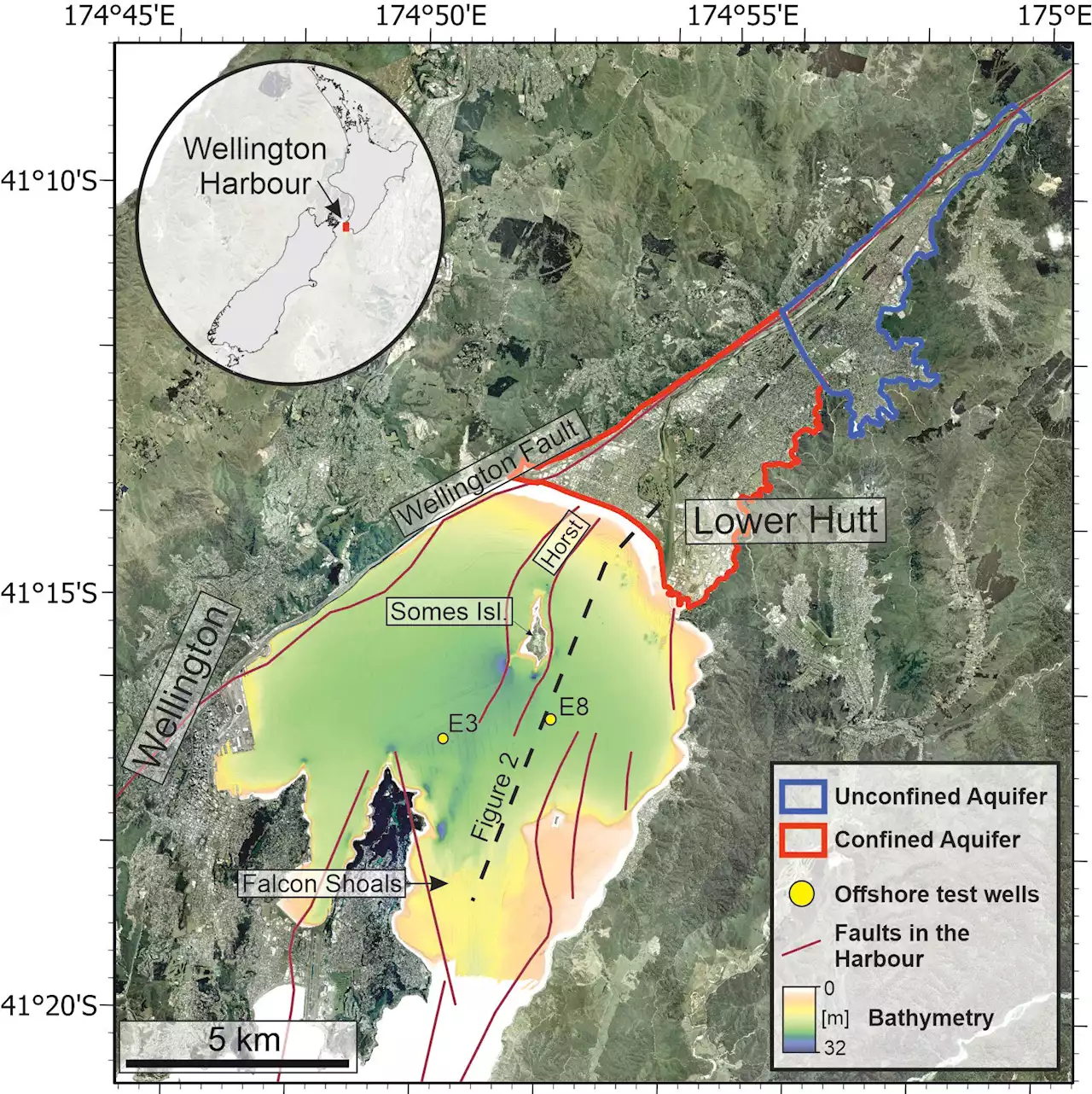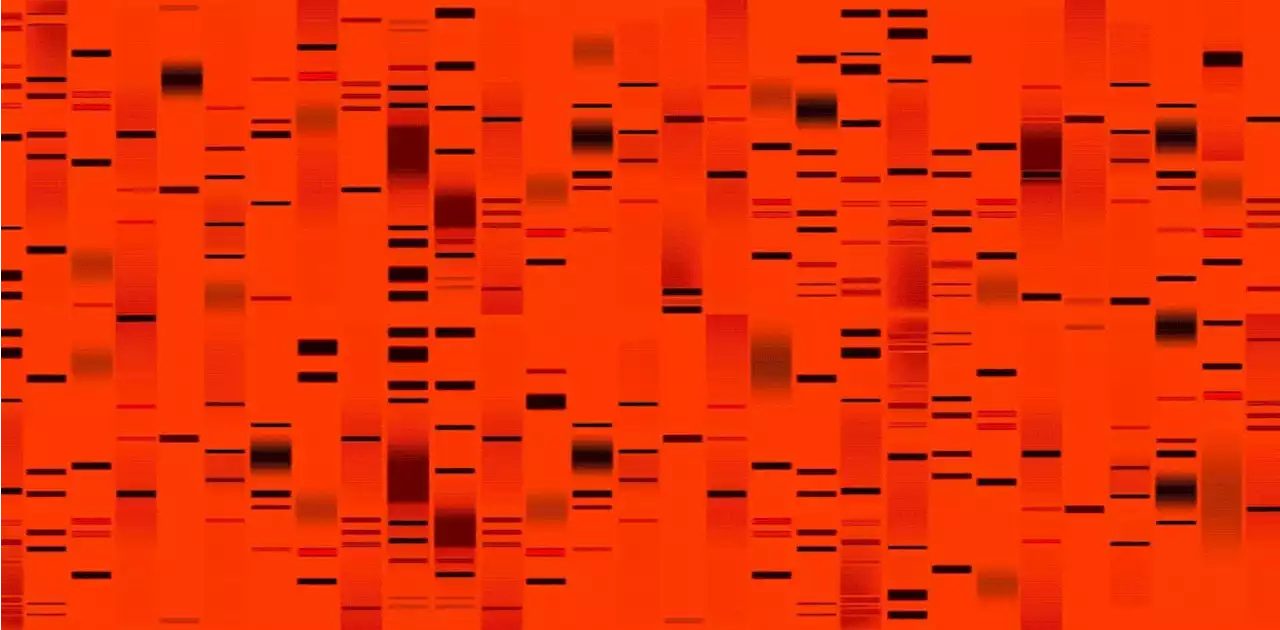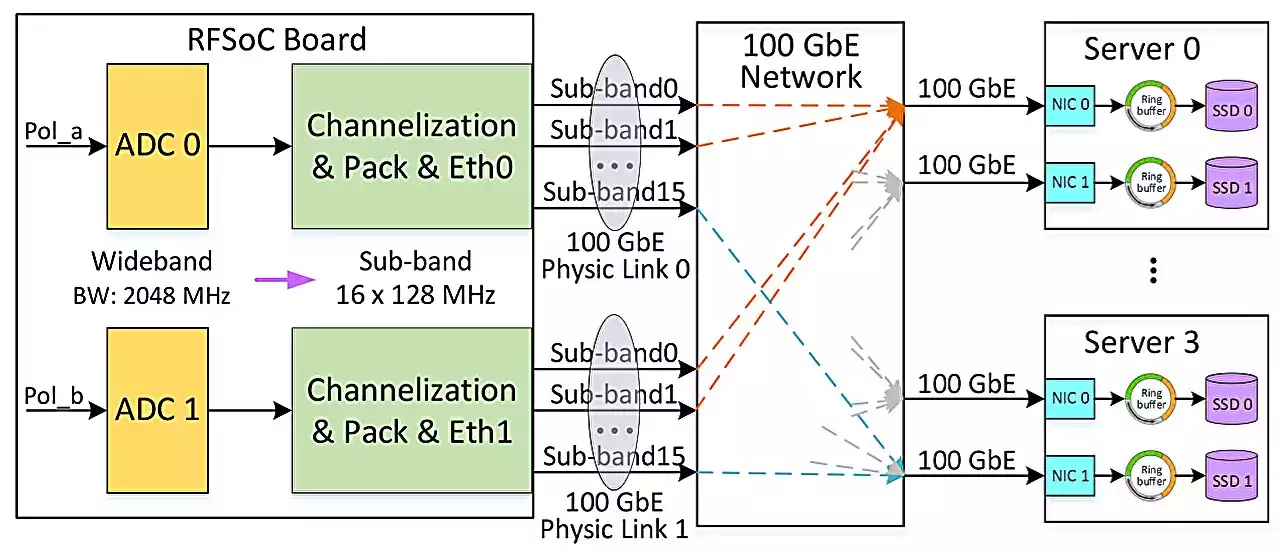The world's most powerful steerable 110-meter radio telescope, also known as the QiTai radio Telescope (QTT), will be built by Xinjiang Astronomical Observatory (XAO) of the Chinese Academy of Sciences (CAS) over a period of six years. Its ceremony kicked off on Sept. 21, 2022.
QTT will be equipped with multiple ultra-wideband receivers, which can improve the observation sensitivity of theby increasing the bandwidth. However, it also poses challenges to signal acquisition, transmission and processing. In addition, the wider bandwidth will incorporate more electromagnetic interference signals, which will affect the quality of astronomical observation and cause a saturation effect on the system.
In order to avoid UWB signal phase and amplitude fluctuations caused by environmental and temperature changes in the analog transmission link, researchers from XAO designed a new UWB signal acquisition and processing experimental system that uses a high-performance, low-power RFSoC circuit to directly sample the radio-frequency signal at the receiver end.
The proposed system is more flexible and expandable, and its control program can configure the involved computing resources according to the observation bandwidth and computational complexity.
Brasil Últimas Notícias, Brasil Manchetes
Similar News:Você também pode ler notícias semelhantes a esta que coletamos de outras fontes de notícias.
 Researchers propose using pulsars to localize gravitational wave sourcesCurrent gravitational wave observatories have two significant limitations. The first is that they can only observe powerful gravitational bursts such as the mergers of black holes and neutron stars. The second is that they can only observe these mergers for wavelengths on the order of hundreds to thousands of kilometers. This means we can only observe stellar mass mergers. Of course, there's a lot of interesting gravitational astronomy going on at other wavelengths and noise levels, which has motivated astronomers to get clever. One of these clever ideas is to use pulsars as a telescope. Research has been published on the pre-print server arXiv.
Researchers propose using pulsars to localize gravitational wave sourcesCurrent gravitational wave observatories have two significant limitations. The first is that they can only observe powerful gravitational bursts such as the mergers of black holes and neutron stars. The second is that they can only observe these mergers for wavelengths on the order of hundreds to thousands of kilometers. This means we can only observe stellar mass mergers. Of course, there's a lot of interesting gravitational astronomy going on at other wavelengths and noise levels, which has motivated astronomers to get clever. One of these clever ideas is to use pulsars as a telescope. Research has been published on the pre-print server arXiv.
Consulte Mais informação »
 Researchers use underwater technology in Bay Area to unlock mysteries of rare octopus gardenThousands of octopus moms are protecting their newly laid eggs on the ocean floor of the Monterey Bay National Marine Sanctuary.
Researchers use underwater technology in Bay Area to unlock mysteries of rare octopus gardenThousands of octopus moms are protecting their newly laid eggs on the ocean floor of the Monterey Bay National Marine Sanctuary.
Consulte Mais informação »
 Researchers create detailed map of Waiwhetu Aquifer, technique could improve worldwide access to coastal freshwaterFor the first time, NIWA used several techniques to map and understand the Waiwhetu Aquifer. This is a reservoir of drinking water that lies beneath the Hutt Valley and Wellington Harbor, and it releases freshwater from deep under the seabed via natural springs.
Researchers create detailed map of Waiwhetu Aquifer, technique could improve worldwide access to coastal freshwaterFor the first time, NIWA used several techniques to map and understand the Waiwhetu Aquifer. This is a reservoir of drinking water that lies beneath the Hutt Valley and Wellington Harbor, and it releases freshwater from deep under the seabed via natural springs.
Consulte Mais informação »
 How a failed experiment led to researchers showing that assumptions about chromosomal behavior were wrongThe cellular processes involved in gene regulation can be unexpectedly complicated. The expression of genes—the when, where and how much of gene activity—underlies all of biology, but is surprisingly poorly understood.
How a failed experiment led to researchers showing that assumptions about chromosomal behavior were wrongThe cellular processes involved in gene regulation can be unexpectedly complicated. The expression of genes—the when, where and how much of gene activity—underlies all of biology, but is surprisingly poorly understood.
Consulte Mais informação »
 If AI becomes conscious: here’s how researchers will knowA checklist derived from six neuroscience-based theories of consciousness could aid in the assessment.
If AI becomes conscious: here’s how researchers will knowA checklist derived from six neuroscience-based theories of consciousness could aid in the assessment.
Consulte Mais informação »
 Waiting on tables, mending puppets: the first jobs that shaped researchers’ careersMany scientists credit teenage jobs and university or summer side roles for imparting important transferable skills and valuable life experiences.
Waiting on tables, mending puppets: the first jobs that shaped researchers’ careersMany scientists credit teenage jobs and university or summer side roles for imparting important transferable skills and valuable life experiences.
Consulte Mais informação »
